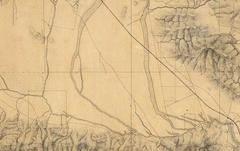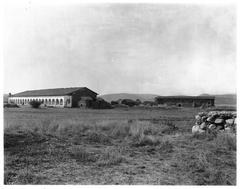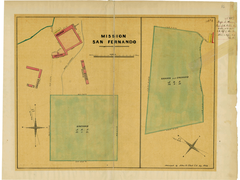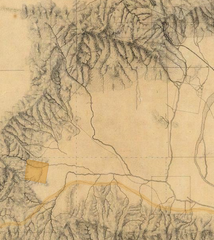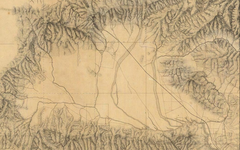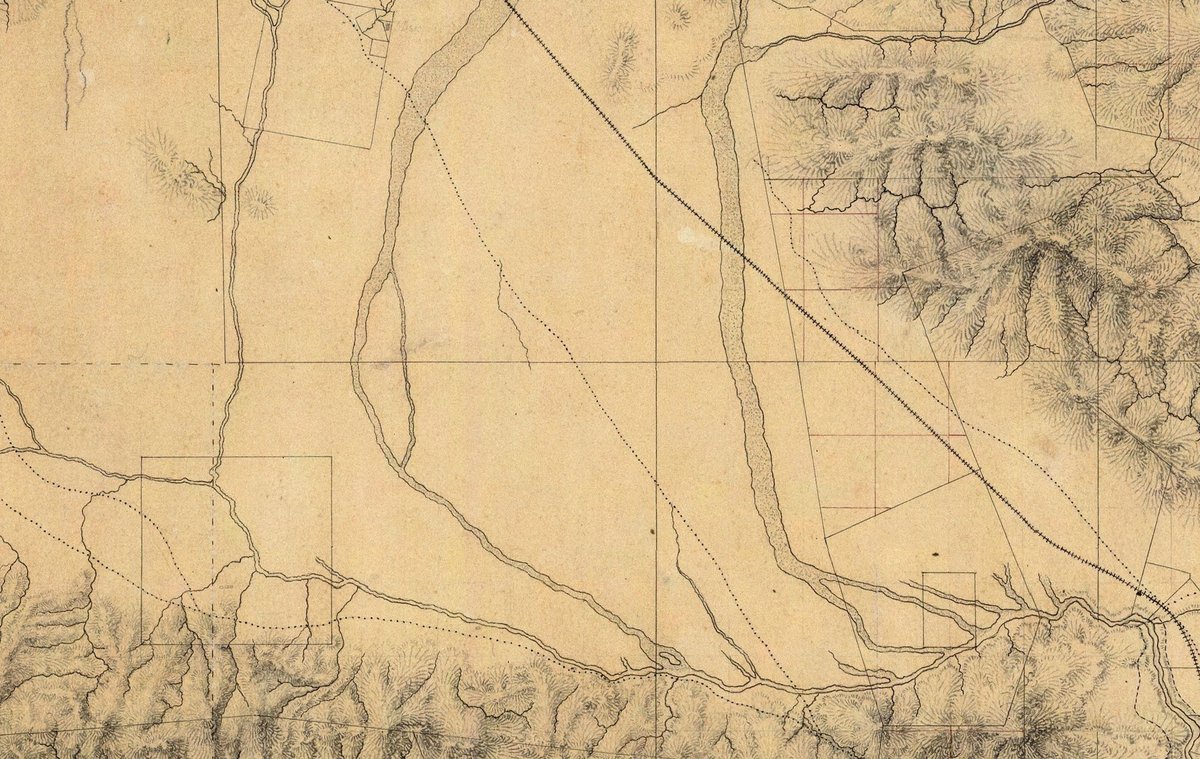
Mission San Fernando Rey De España: Visiting Hours, Tickets, and Complete Los Angeles Historical Sites Guide
Date: 14/06/2025
Introduction
Situated in the Mission Hills district of Los Angeles, Mission San Fernando Rey de España stands as a testament to California’s layered history, blending Spanish colonial ambition with indigenous heritage. Founded in 1797 as the seventeenth of the state’s 21 missions, this active parish, museum, and cultural center is renowned for its iconic Spanish Colonial architecture, its pivotal role in regional development, and its ongoing efforts to preserve stories of the Tataviam, Tongva, and Chumash communities (California Missions Foundation). Whether you are a local historian, tourist, or student, this guide details everything you need to plan a meaningful visit—from practical information on hours and tickets to a nuanced exploration of its architectural and social legacy.
Table of Contents
- Historical Overview
- Visitor Information: Hours, Tickets, and Accessibility
- Site Highlights: Architecture, Gardens, and Museum
- Cultural Significance and Indigenous Legacies
- Travel Tips and Nearby Attractions
- Frequently Asked Questions (FAQ)
- References
Historical Overview
Founding and Purpose
Mission San Fernando Rey de España was established on September 8, 1797, by Father Fermín Francisco de Lasuén. Named for Saint Ferdinand III of Spain, the mission’s location was selected for its fertile soils and abundant water, serving as a strategic midpoint between Mission San Gabriel and Mission San Buenaventura (California Missions Foundation).
Architectural Development
The mission is famed for its whitewashed adobe walls, red-tiled roofs, and the impressive Convento—California’s largest adobe building, finished in 1822. The Convento’s 19-arch colonnade marks it as a landmark within the mission system (California Missions Foundation). The original church, built between 1804 and 1806, was reconstructed after the 1971 Sylmar earthquake.
Economic, Social, and Indigenous Context
The mission developed extensive agricultural and ranching operations, supporting thousands of cattle, sheep, and crops. By 1811, over 1,000 Native Americans, primarily Tataviam and Tongva, lived and worked at the mission—often under harsh and coercive conditions (California Missions Resource Center, LA Conservancy). The mission era marked both unprecedented cultural exchange and profound disruption for indigenous peoples.
Secularization, Decline, and Restoration
Following the Mexican Secularization Act of 1833, mission lands were redistributed and the property fell into disrepair. In 1861, President Abraham Lincoln returned the property to the Catholic Church. Restoration efforts in the 20th century, especially after earthquake damage, have preserved much of the mission’s historic fabric (National Park Service, California Office of Historic Preservation).
Visitor Information: Hours, Tickets, and Accessibility
Hours and Admission
- Open: Daily, 9:00 AM – 4:30 PM (closed Mondays and major holidays; check official website for updates).
- Admission: $5 adults, $3 children (7–15), children under 7 free. Group and school rates available (BestGuideLA).
- Parking: Ample and free on-site.
- Payment: Credit cards accepted for admission and shop purchases (Discover Los Angeles).
Accessibility
- Wheelchair-accessible pathways and restrooms.
- Some historic rooms and upper levels may have limited access due to preservation concerns.
- Contact the mission in advance for specific needs.
Guided Tours and Programs
- Regular docent-led tours (advance booking recommended for groups).
- Educational programs and seasonal events for families and schools (Mission San Fernando Rey Official Site).
Site Highlights: Architecture, Gardens, and Museum
The Convento (“Long Building”)
The Convento, completed in 1822, is the largest adobe structure in California, famed for its 243-foot length and 19-arch colonnade. Built as a guesthouse for travelers and dignitaries, it now houses museum galleries and historic rooms (California Missions Foundation).
The Church and Sacred Spaces
The rebuilt mission church features ornate Spanish Colonial design, original furnishings, a hand-carved altar, and religious art. The interior reflects a blend of Spanish and indigenous craftsmanship.
Gardens and Memorials
- Mission Gardens: Lush, tranquil spaces with citrus trees, native plants, and shaded walkways.
- Bob Hope Memorial Garden: Final resting place of entertainer Bob Hope and his wife Dolores, offering a peaceful setting for reflection (BestGuideLA).
- Cemetery: One of the oldest in Los Angeles County, with interpretive markers for early settlers and over 2,400 Native Americans (EtanDoesLA).
Museum and Outbuildings
- Artifact displays include religious objects, period tools, textiles, and archival photos.
- Outbuildings such as the Mayordomo’s House, blacksmith shop, and wine cellar illustrate mission life and self-sufficiency.
- Library and archives (limited access).
Cultural Significance and Indigenous Legacies
Mission San Fernando Rey de España was both a center for Spanish colonial expansion and a site of indigenous transformation and loss. While the mission system introduced new agricultural techniques, crafts, and Christianity, it also resulted in forced labor, cultural disruption, and high mortality among native peoples (LA Conservancy). Modern exhibits, guided tours, and memorials acknowledge these complex impacts, encouraging critical reflection.
Architecturally, the mission influenced the popular Mission Revival style, visible throughout California’s schools, civic buildings, and homes (Citizendium).
Travel Tips and Nearby Attractions
Tips for an Enjoyable Visit
- Best Times to Visit: Weekdays and mornings are quieter; weekends may be busier.
- What to Bring: Sun protection, water, and a camera.
- Dress Modestly: Respectful attire is requested, especially in sacred spaces.
- Accessibility: Check ahead for mobility accommodations.
- Photography: Allowed in most areas, but avoid flash/tripods in sacred or restricted zones.
Nearby Attractions
- The Nethercutt Museum: Classic cars and music machines.
- Museum of the San Fernando Valley: Local history exhibits.
- Discovery Cube Los Angeles: Family-friendly science center.
- CSUN Botanic Garden and Japanese Garden at Lake Balboa: Outdoor retreats (WhichMuseum).
Frequently Asked Questions (FAQ)
Q: What are the mission’s hours?
A: Daily, 9:00 AM–4:30 PM (check for holiday closures).
Q: How much are tickets?
A: $5 adults, $3 children (7–15), under 7 free. Group rates available.
Q: Is the mission accessible?
A: Yes, most areas are wheelchair-accessible. Some historic rooms have limited access.
Q: Are guided tours available?
A: Yes, regularly scheduled and by request for groups.
Q: Can I take photos?
A: Yes, except during religious services or where posted.
Q: What else is nearby?
A: The Nethercutt Museum, local gardens, and history museums.
Summary
Mission San Fernando Rey de España offers a rare opportunity to engage with California’s mission history, architectural beauty, and multicultural heritage. With well-maintained facilities, modest admission fees, and engaging tours, it is accessible and rewarding for all ages. The mission’s tranquil gardens, vibrant museum, and poignant memorials invite both reflection and discovery. Plan your visit using online resources and consider downloading the Audiala app for audio guides and interactive maps.
References
- California Missions Foundation
- California Missions Foundation (Architectural Significance)
- Mission San Fernando Rey Official Website
- BestGuideLA
- Discover Los Angeles
- California Missions Resource Center
- LA Conservancy
- National Park Service
- WhichMuseum
- EtanDoesLA
- Citizendium
